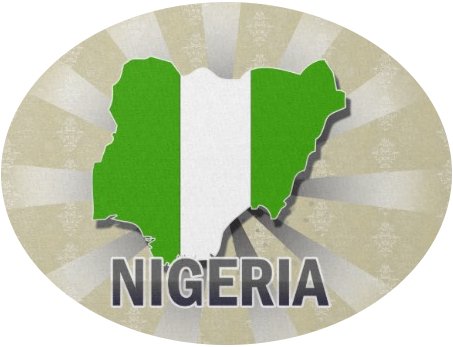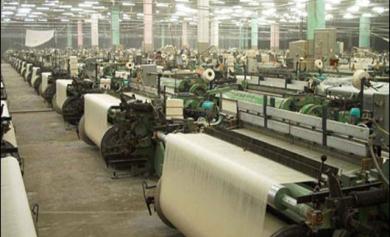 Nigeria’s textile industry used to be – possibly still is – the African continent’s third largest after that of Egypt and South Africa. For one reason or another, the first two are fairly well established among brands of all colours and types as potential – and actual – sourcing destinations. Egyptian cotton is well renowned, as is their industry for jersey goods. Also ‘Made in South Africa’ is not uncommonly found in clothing labels.
Nigeria’s textile industry used to be – possibly still is – the African continent’s third largest after that of Egypt and South Africa. For one reason or another, the first two are fairly well established among brands of all colours and types as potential – and actual – sourcing destinations. Egyptian cotton is well renowned, as is their industry for jersey goods. Also ‘Made in South Africa’ is not uncommonly found in clothing labels.
When it comes to Nigeria however, few suspect that it scores third in importance of its textile industry. Still fewer know what the current (economic) situation of the country overall is, and there is even awareness of what is going on in the country’s textile industry.
This post hence is intended to give an introductory overview of what is going on, point out some of the yet to be answered questions and the opportunities – and in short, give a first idea of where Nigeria is at in terms of textile economic development.
Nigeria – status quo of economic development

Without further ado, the quote taken from 2012 country file of the African Economic Outlook summarises both, the country’s opportunities as well as its challenges:
“Nigeria’s economic growth has averaged about 7.4% annually over the past decade and remained robust in 2011 at 6.9%, driven by the non-oil sector, particularly telecommunications, construction, wholesale and retail trade, hotel and restaurant services, manufacturing and agriculture. Growth is projected at 6.9% and 6.6% in 2012 and 2013, respectively. The government is expected to reach its target of getting inflation under 10% in 2013. The inflation rate fell from 13.7% in 2010 to 10.2% in 2011 following monetary policy tightening and the easing of food prices. Inflation is projected to ease to 10.1% in 2012 and 8.4% in 2013.
The economic growth has not cut poverty nor created necessary jobs. About two thirds of the population lives on less than 1 US dollar (USD) per day and the unemployment rate in 2011 was 23.9%, up from 21.1% in 2010. Unemployment in the 15-24 age group was 37.7%, and for 25-44 years, 22.4%. The government has introduced youth job creation initiatives.”
In other words: the economy is growing at rates that show that the country is on the move and innovating – yet the growth rate are also due to a low point of departure, and the social problems (illiteracy, unemployment) the country has are worse still in the present than anything Europe has known in its history of the past 150 years – including current unemployment rates in Spain and Greece.
However, the government is well aware that the country’s growth is primarily driven by its petrol and gas industry – the country is one of the world’s largest exporters: 81% of the Nigerian government’s revenue are generated from the export of hydrocarbons exports, which account for over 95% of all exportations of the country – and that economic alternatives are desperately required. There is a fair discussion around how to leverage the money from petrol and gas best in order to achieve that. This said, the fact that this money ends up in the pockets of a relatively small minority (across the spectrum: government, private sector, individuals) adds to the challenge.
Finally, still in the present 75% of Nigeria’s GDP is generated through agricultural activities – a sector lacking any innovation development and lagging behind in best practise both in terms of efficiency and sustainability. This raises evidently questions as to how ready the country is to leverage is opportunities in the short and mid-term future. The opportunities are undoubtedly there, but if they will be put in practise is an entirely different story.
Nigeria – status quo of its textile industry
As mentioned above, Nigeria’s textile industry is – or at least used to be – the continents third largest. According to a report by the United Nations University, Nigeria’s textile industry
“[…] accounted for about 25% of manufacturing value added. It […] enjoyed steady growth in the 1960s, which gave way to rapid growth, averaging 12.5%, in the 1970s when the economy was booming. The recession of the early to mid-1980s took its toll: the cumulative textile production index (1972 = 100) declined from 427.1 in 1982 to 171.1 in 1984. The industry recovered in the late 1980s, achieving an annual growth of about 67% between 1985 and 1991, with synthetic textiles alone accounting for about 80% of the recorded growth.[…]
The industry is the largest employer of labour in the manufacturing sector, and accounted for about 25% of total manufacturing employment.”
Video: The Nigerian Textile Industry – The Journey so far
The report concludes that despite the industry’s low efficiencies and largely out-dated machinery, the fact that it was never part of the Multi-Fibre Agreement, has triggered foreign investment – mostly from Asia (China in particular) – and hence there still are some textile exports happening right through to the present.
Additionally, in the course of the past 20 years an influx of cheap foreign second-hand clothing has changed the dynamics of the country’s domestic textile industry. And this from several angles: one, the population suddenly had access to affordable clothing of good quality – neither of which the local industry could offer. The industry had survived largely on the base that the local population did not have access to alternatives, and hence had to put up with what ever was available – despite price and lack of quality – locally up to that point in time.
Further, after the end of the Multi-Fibre Agreement in 2005, and the disappearance of quota’s from countries such as Indonesia, the Philippines and China, global competition based in price and product quality increased substantially. The national textile industry’s inefficiencies and lack of quality standards and difficulties in accessing raw materials at a competitive price hence, triggered a decline that has been ongoing ever since.
Reforms and sustainable development: Outlook
Over the past decade Nigeria has been carrying an ambitious reform agenda.
One of the most important aspects in this context is the fact that Nigeria was among the first countries to adopt and implement the Extractive Industries Transparency Initiative (EITI) to improve governance and oil sector. The NEITI Act was passed into law in 2007. Nigeria became EITI compliant in 2011.
“Vision 20:2020” is the country’s economic policy that seeks to position Nigeria in the top 20 economies by 2020 as well as being the financial centre of Africa. In a ‘Blue print’ document released in late 2010/early 2011, initial (but heavily discussed) steps were announced to put the country’s economic system on a save base, which included reduction of foreign debt, and targeted investments into eduction and infrastructure innovation.
Unaddressed though remains one country’s most challenging aspects though: With 158 million people – twice the population of the UK or Germany – Nigeria is the largest country in Africa and accounts for 47% of West Africa’s population, which is made up of about 200 ethnic groups, 500 indigenous languages, and two major religions ? Islam and Christianity.
The role of the textile industry for the country’s sustainable future
Video: The Future of Nigeria’s textile industry
In the country’s “Vision 20:2020” the textile industry plays a significant role, notably because it is the principle manufacturing industry (petrol and gas being qualified as ‘extracting’ industries), and hence potentially could offer employment opportunities to the masses of low skilled unemployed.
In a very recent article dating from April 29th 2013 aligns the development of the industry with that happening in overseas markets.
Acknowledging that the existing prohibition of importing textile products into Nigeria has had zero effect on the situation in the country, the article asks what government action need be put in place to open up opportunities. A key aspect thereby is the availability of financing options for state-of-the-art new technological equipment, which at this stage is non-existent.
Another challenge is the sordid state of public infrastructure – notably roads and electricity – both of which are a basic pre-condition for a functioning textile industry. Power-cuts are however still frequent, and roads in many cases underdeveloped.
And it is while talking about challenges that indeed opportunities are to be found at the same time: The problems the Nigerian industry has open doors to innovation perfectly aligned with sustainability and sustainable development goals – provided investors and government can be bothered.
Given, for example, the problems in power infrastructure of the country, pushing the energy efficiency of the industry – rather than importing energy-greedy machines from overseas – offers 2 key tractors: a) lower production prices thanks to lower energy use and higher energy efficiency b) collaboration with overseas equipment manufacturers which will face exactly the same challenges in other geographies rather sooner than later.
Similarly, in an era where typical input raw materials such as cotton and polyester become progressively hard and expensive to buy, the country’s own potential for growing cotton as well as potential other raw materials, offers the opportunity to develop more than just weaving or CMT units, but rather a fully vertically integrated national supply chain.
Conclusion
Conclusively, what can be said about the opportunities and challenges of Nigeria’s textile industry? Is the country a hot bed or a pandora’s box of challenges?
The short answer to the above questions would be: both.
The challenges are the flip side of the opportunities that exist in the country – and vice versa.
The long answer is as follows:
On the short term, the existing challenges are detrimental to the development of a textile industry that relies on extensive access to a reliable energy supply on the one hand, and vast amounts of raw material and hard working labour on the other.
However, it is precisely these factors, also, that suggest that in the course of more innovative technology becoming available, the outlook might well be very positive on the mid- to long-term:
highly energy-efficient equipment will invariably become available. The government is putting financing options in place which are partially cross-financed by the benefits of the country’s petrol and gas industry. With an unemployment rate of up to 60%, access to labour is not an issue – and with textiles being overall a labour-intensive but low-skilled industry, employment opportunities are vast, and access to labour guaranteed.
In other words – just as there were ‘insurmountable’ challenges 30 or 40 years ago with off-shoring to China, Nigeria – and Africa as a whole – will find ways of how to make good use of the existing opportunities.
The question for all of us though will be: How can we avoid recreating a similarly unacceptable situation – environmentally as well as socially – as is currently the case in Asia? How could we possibly leap frog the hard lessons learned, and jump straight to implementing best practises from the beginning?
Because and important to remember – implementing best practise comes at Zero cost if done so from the beginning…
For more on Nigeria, also read Business of Fashion’s recent article.

